

| The Ants of Nottinghamshire | ||
| .......... |
| Ants are some the more easily
recognised insects. Found everywhere, they are soon
learned and quickly identified by children from an early
age, although they are often described as just two
species - either red ants or black ants. Of course there are more than just two species and if only it was that easy to determine an identification. But ants always held an enormous interest, and many childhood hours were spent watching them tunnel down into soil-filled jam jars, or catching young queens after their nuptial flight on humid days. Ants are easily accessible insects, as they can be found in everyone's garden and even widowboxes will hold a colony for a number of years. They are extremely fascinating, industrious insects and observing their behaviour can be absorbing. Nottinghamshire species Even 40 years ago, it was quite obvious on local collecting trips looking for ant nests, that there were limits to the number of species found in Nottinghamshire. |
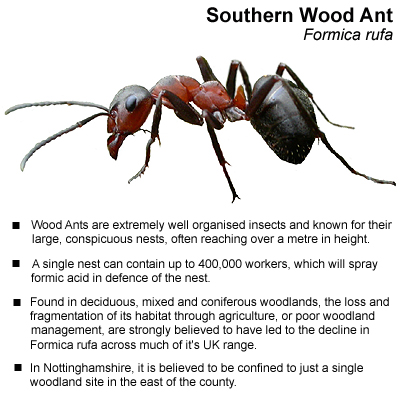 |
|
| .......... | ||
| Derbyshire,
Lincolnshire and Leicestershire, all seem to do better
for the number of species than we do in Nottinghamshire.
This may be due to a county's more diverse variety of
available habitats, its geographical location within the
UK, or just that there was a greater interest shown in
ants than there has been in Nottinghamshire?
There are currently around 70 species known from the UK. Some of these are accidental imports, which have since become established in tropical butterfly houses and horticultural greenhouses and at the moment, the actual number of native UK species is currently around fifty. |
||
| .......... |
| A checklist of Nottinghamshire Formicidae (Family) |
| Species shown with a red asterisk, are only known from historical records only (pre-1960 in this instance) |
| .......... |
| Dolichoderinae (subfamily) |
| TAPINOMA Förster, 1850 |
| Tapinoma magnum (Förster, 1850) |
| .......... |
| Formicinae (subfamily) |
| FORMICA Linnaeus, 1758 |
| Formica fusca (Linnaeus, 1758) |
| Formica lemani (Bondroit, 1917) |
| Formica rufa (Linnaeus, 1761) |
| .......... |
| LASIUS Fabricius, 1804 |
| Lasius alienus (Foerster, 1850) |
| Lasius brunneus (Latreille, 1798) |
| Lasius flavus (Fabricius, 1782) |
| Lasius fuliginosus (Latreille, 1798) |
| Lasius mixtus (Nylander, 1846) |
| Lasius niger (Linnaeus, 1758) |
| Lasius platythorax (Seifert, 1991) |
| Lasius umbratus (Nylander, 1846) * |
| .......... |
| Myrmicinae (subfamily) |
| FORMICOXENUS Mayr, 1855 |
| Formicoxenus nitidulus (Nylander, 1846) * |
| ............ |
| LEPTOTHORAX Mayr, 1855 |
| Leptothorax acervorum (Fabricius, 1793) |
| ............ |
| MYRMICA Latreille, 1804 |
| Myrmica lobicornis (Nylander, 1846) |
| Myrmica rubra (Linnaeus, 1758) |
| Myrmica ruginodis (Nylander, 1846) |
| Myrmica sabuleti (Meinert, 1861) |
| Myrmica scabrinodis (Nylander, 1846) |
| Myrmica sulcinodis (Nylander, 1846) |
| .......... |
| STENAMMA Westwood, 1840 |
| Stenamma debile (Förster, 1850) |
| .......... |
| TETRAMORIUM Mayr, 1855 |
| Tetramorium bicarinatum (Nylander, 1846) * |
| .......... |
| Ponerinae (subfamily) |
| HYPOPONERA Santschi, 1938 |
| Hypoponera punctatissima (Rogers, 1859) |
| .......... |
| Nottinghamshire's
historical Ant records In Nottinghamshire, ants have always been little studied. Victorian and Edwardian naturalists never recorded them with any regularity and there seems to have been a continued lack of interest in ants over the past 100 years. This has meant little change to the county list, so we again rely greatly on the species accounts and resulting lists produced when J.W. Carr published his book 'The Invertebrate Fauna of Nottinghamshire' Nottingham: J.& H. Bell Ltd. in 1916. |
||
| .......... |
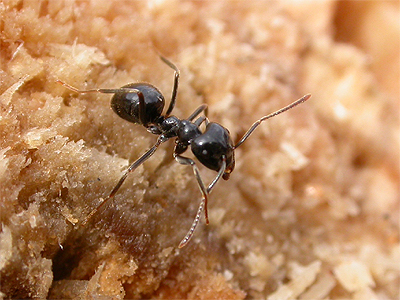 |
Present Nottinghamshire
naturalists still rely a great deal on Carr's fabulous
work, in which he collated the county's invertebrate
records together into a single volume. He later followed
this up with the supplement to his original book 'The
Invertebrate Fauna of Nottinghamshire. Supplement.'
Nottingham: J.& H. Bell Ltd, published in 1935.
However, nothing seems to have been published on the
county's ants since. The newly revamped NBN Atlas helps those of us who regularly research county records and it does include most of the Formicidae records listed in Carr's book. But getting hold of any recently uploaded records for Nottinghamshire (if there are any) is still painfully slow. Potentially (if all the species recorded and listed in Carr's book are reliable) then Nottinghamshire currently has 23 known species of ant. All but Formicoxenus nitidulus, Hypoponera punctatissima, Lasius alienus, Lasius brunneus, Lasius mixtus, Myrmica lobicornis, Myrmica sabuleti, Myrmica sulcinodis, Stenamma debile and the currently unidentified Tapinoma sp, are listed by Carr, as most of these seem to be recent additions to the county list. |
|
| .......... | ||
| Lasius umbratus makes its way onto the Nottinghamshire's list, on the basis of W.C. Crawley's 1908 record of two (post Nuptial flight) Queens found on a road at Tollerton, but it has recently been recorded again from Netherfield. W.C. Crawley also recorded Tetramorium bicarinatum for a number of years from a West Leake conservatory around 1909, before a single worker Tetramorium bicarinatum was also recorded by S. Pegler at Retford. | ||
| .......... |
| Some recent
additions Tony Kavanagh has recently brought to our attention (September 2018), two species of Ant which are new to Nottinghamshire, following his recent email exchange with Mike Fox of BWARS. The two additions are historical records of Formicoxenus nitidulus and Lasius platythorax. The records for both species are detailed in the following accounts. Stenamma debile was discovered new to Nottinghamshire at Sherwood Heath in 2020 and Hypoponera punctatissima was found at the Sherwood Forest CP and Sherwood Forest Centre Parcs in 2023. Lasius brunneus, was a new addition to the county list, when recorded at Misson Carr in July 2024, as was a Tapinoma magnum, discovered at the Dukeries Garden Centre in August of the same year, and finally confirmed in 2025. A Queen Lasius mixtus was new to Nottinghamshire, when recorded at Cockglode Wood/Sherwood Heath in April 2025. County status of Nottinghamshire Formicidae (Ants) and recent records Dolichoderinae (subfamily) Tapinoma magnum Mayr,1861 Found at a Nottinghamshire garden centre in late August 2024, this Tapinoma species was found present in extremely large numbers and continues to be present on site. The colony was originally thought to be based in a newly renovated greenhouse, but recent work in early 2025 suggests that the colony, or likely multiple budded colonies, are located within an old outer brick wall surrounding the garden centre, which is several metres high. It was the sheer number of ants following long, distinct trails in a range of directions, both inside the glasshouses and along and up the surrounding walls outside, that prompted me to think that this was a more interesting species and not just Lasius niger. General overall shape and behavioural differences (jizz) led to me collecting numerous specimens for identification. These were sent off to several UK based experts and Matt Hamer in Hong Kong. Max Barclay of the Natural History Museum, also very kindly arranged for specimens to be sent for DNA analysis and the preliminary results so far (November 2025) suggest that these ants are indeed Tapinoma magnum. Coincidentally, this news came on the very day as I found another substantial colony (presumably of this same Tapinoma sp) a few miles north of the Dukeries Garden Centre, at the Sandy Lane Retail Park, Worksop, in early November 2025. There are no Tapinoma ants native to Nottinghamshire, so this is certainly an imported species and potentially invasive, but which must have arrived here via plant importation to both sites. According to staff at the Dukeries Garden Centre, the ants have been present at there for many years. Formicinae (subfamily) Formica fusca (Linnaeus, 1758) ... Widespread and generally very common where found. The greatest percentage of the Nottinghamshire population, is found on the sandy soils encompassing the Mansfield area, stretching from the Bestwood area of Nottingham to north of Clumber Park. There are recent records from Spalford Warren NR in the very east of the county and from a brownfield site at Langar, but these seem isolated sites among Nottinghamshire other records. Formica lemani (Bondroit, 1917) ... Less common than F. fusca, which often occurs in the same habitat. We know of confirmed records from Oak Tree Heath in 2008, Sherwood Heath SSSI in 1989 and 1990 (Whiteley, D.), Sherwood Forest CP in 2002 and Clumber Park in 2009 (Phillips, A.). |
| .......... | ||
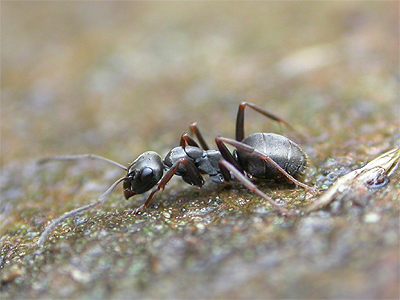 |
Formica rufa (Linnaeus, 1761)
This large ant always seems to have had a restricted distribution in
Nottinghamshire. J.W. Carr listed two historical records for the county,
describing it as being 'common in the Fir woods about Thorney and
Wigsley' (Carr), with a record from Mansfield in 1912 (Staunt). The
Mansfield record may be the Sherwood Forest record listed in the
distribution surveys of Nelmes (1939), Yarrow (1955) and Barrett (1968),
which we were made aware of by Phil Attewell, who is the county recorder
for Hertfordshire. Formica rufa currently remains restricted to one area of woodland in the east of the county near Girton, where nests appeared to be common when we visited the site in 2009 and 2016. The woodland is strictly private. Lasius alienus (Foerster, 1850) ... In Nottinghamshire, this is an uncommon ant of open, dry and sandy sites, which rather restricts its range within the county. There are recent records from Spalford Warren NR and Besthorpe NR north of Newark, Budby South Forest (Pendleton, T.A. and Pendleton, D.T.) and from Oak Tree Heath at Mansfield. |
|
| .......... | ||
| Above :- Worker Formica fusca, photographed at Clipstone Old Quarter (Sherwood Forest NNR) January 2018. | ||
| .......... |
| Seifert (1992) discovered that Lasius
alienus consisted of two species, consisting of the
true Lasius alienus sensu stricto (Foerster 1850) and also Lasius psammophilus (Seifert, 1992). There appear to be no confirmed
records of Lasius psammophilus from
Nottinghamshire. Lasius brunneus (Latreille, 1798) ... This species was only discovered new to Nottinghamshire in July 2024, when workers were found on a Silver Birch at Misson Carr NR in the very north of the county (Wilde, I.). It seems likely that this species, may have passed under-recorded in other parts of the county, although it has not been found in Sherwood Forest, despite being actively looked for over recent years. Lasius flavus (Fabricius, 1782) ... Fairly widespread across many parts of the county, Lasius flavus is presently the only yellow ant proven to occur in Nottinghamshire. Nests are built entirely underground, often within garden lawns where they may be disturbed by regular mowing. On undisturbed grassland, characteristic grassy mounds build up over many years. Lasius fuliginosus (Latreille, 1798) ... Until only very recently, there was just a single historical record from Sherwood Forest dating to 1907 and it was believed that Lasius fuliginosus had long since died out in the county. However, news of the discovery of a colony at Netherfield in August 2018 (Kavanagh, T.) was forwarded to us by Peter Smith, who informed us that workers were tending Aphids on Tansy (Tenacetum vulgare), at a location close to the River Trent. In 2023, a second fuliginosus colony, with many workers tending at least two species of Aphids on Goat Sallow, was located some way from the original colony found in 2018 (Tyler, M.). Lasius mixtus (Nylander, 1846) ... In early April 2025, a de-alate Queen Lasius mixtus (de-alate the term being given to a mated Queen, after her nuptial flight) was found wandering a track at Cockglode Wood/Sherwood Heath (Pendleton, T.A.). Lasius niger (Linnaeus, 1758) ... This is the ubiquitous Black Garden Ant, which is the species everyone is familiar with. Widespread across the county, there is probably nowhere it doesn't occur. In 1991, Seifert found that Lasius niger actually consisted of two separate species, the true Lasius niger sensu strico (Linnaeus, 1758) and Lasius platythorax (Seifert, 1991). There appear to be no Nottinghamshire records of Lasius platythorax. Lasius platythorax (Seifert, 1991) ... This species is visually identical to Lasius niger without optical aid, but differs by having a sparsely-haired Clypeus. Confirmation is easy having a specimen under the microscope, or good close up photographs. It is likely that most Lasius niger-type ants collected from shady/damp situations in woodland, will likely turn out to be this species. It does not have the same affiliation to synanthropic habitats as Lasius niger. For over a century, the only Nottinghamshire record of Lasius platythorax was from Langford Moor near Newark in 1914. This was re-identified almost 100 years later, from a specimen retained in the Natural History Museum in Dublin Museum by Mike Lush in 2007. The county's only modern records, appear to be from Budby South Forest in June 2024 (Clark, G.) and again in April 2025 (Pendleton, T.A.). This obviously under-recorded ant has also been found at Misson Carr in April 2025 (Pendleton, T.A.) and further surveys are underway to confirm/find more sites in nottinghamshire. Lasius umbratus (Nylander, 1846) ... Carr's book lists just a single record of Lasius umbratus, when two (post Nuptial flight) Queens were found on a road at Tollerton in 1908 (Crawley, W.C.). There are recent records from neighbouring Leicestershire, even reaching as close as Loughborough (Leicestershire and Rutland Environmental Records Centre). It was suspected this ant may well be in the very south of Nottinghamshire, before the finding of a Lasius fuliginosus colony at Netherfield Lagoons in 2018 (Netherfield Wildlife Group) further raised hopes of umbratus (the host species for fuliginosus queens) turning up. And it eventually did, when many Lasius umbratus workers were found co-existing with foraging Lasius fuliginosus workers after a second fuliginosus colony was found at Netherfield in October 2023 (Pendleton, T.A.). In late August 2025, a Queen Lasius sp, was recorded wandering near an MV light being operated at Misson Carr. Later determination, proved it to be Lasius umbratus (Pendleton, T.A.). |
| .......... |
| Below :- Worker Myrmica rubra, photographed at Oxton Churchyard, September 2015. |
|
Myrmicinae (subfamily) Formicoxenus nitidulus (Nylander, 1846) ... Believed to be a social parasite, making discreet nests within the large mounds produced by several Formica species. Known only from Wigsley Wood in the north-east of the county, when it was recorded by Collingwood in 1955 and again in 1957, where it was presumably found within the nests of Formica rufa. Leptothorax acervorum (Fabricius, 1793) ... A small red ant which nests under bark, quite often within a small branch. Colonies are small in comparison to most other species and nests can sometimes be located within close proximity to those of other (larger) species. Leptothorax acervorum is probably reasonably common in Nottinghamshire, but is very easily overlooked and may well be under-recorded.Myrmica lobicornis (Nylander, 1846) ... Known from just two sites, although possibly an under-recorded species. Nottinghamshire's first record was from Clumber Park in 2011 (Brash, P.), which was not followed up until found on Sherwood Heath SSSI in 2016 (Pendleton, T.A. and Pendleton, D.T.). |
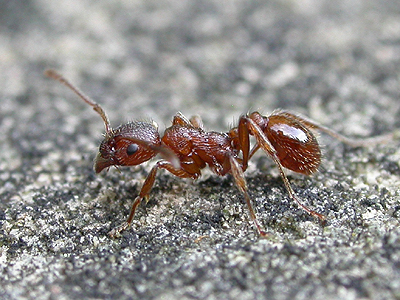 |
|
| .......... | ||
|
Myrmica rubra (Linnaeus, 1758) ... Common and widespread throughout the county and present in most habitat types. This is the red ant most commonly found in gardens. Myrmica ruginodis (Nylander, 1846) ... This is another common ant over most of the county, although in our experience Myrmica ruginodis is slightly less widespread than Myrmica rubra. The two are often found together at many sites. Myrmica sabuleti (Meinert, 1861) ... Myrmica sabuleti appears to be relatively new to Nottinghamshire and has a restricted range. It is an ant of dry, sandy soils and in the Sherwood Forest area, has been recorded from heathland sites at Budby South Forest, Sherwood Forest CP and Sherwood Heath SSSI (Godfrey, A.). There is a single record from Spalford Warren NR, in the very east of the county. Myrmica scabrinodis (Nylander, 1846) ... Possibly recorded as being new to Nottinghamshire in 2006, when found during an invertebrate survey of Sherwood Heath SSSI (Godfrey, A.). Myrmica scabrinodis was also found from several sites in Clumber Park (Godfrey, A. and Phillips, A.) during surveys there in 2009 and has also been recorded from Budby South Forest, Walesby Forest, near Farnsfield and Ravenshead. Myrmica sulcinodis (Nylander, 1846) ... This seems to be a rare ant in Nottinghamshire and as the recorders name is not available, the record could be doubtful. Nottinghamshire's only record is from Oak Tree Heath in 2008 (recorder unknown). Stenamma debile (Westwood, 1840) Only recently discovered new to Nottinghamshire, when a worker was found at Sherwood Heath in October 2020 (Pendleton, T.A.). This record very much represents a relatively isolated inland record, for a species which is largely coastal, although it is found throughout East Anglia. Tetramorium bicarinatum (Nylander, 1846) ... J.W. Carr lists two records of this non-native species. It was apparently recorded for a number of years from a West Leake conservatory around 1909 (W.C. Crawley) and a single worker was found at Retford (Pegler, S.). Ponerinae (subfamily) Hypoponera punctatissima (Rogers, 1859) The discovery of this very small, rather elongate ant in Nottinghamshire, came very much as a surprise after a small colony was found at the top of a large woodchip pile at Sherwood Forest CP in early June 2023 and then at nearby Sherwood Forest Centre Parcs (Dutton, A.). The precise identity was uncertain at the time of discovery, but specimens were taken and proved to be Hypoponera punctatissima and a new species for Nottinghamshire. |
| Species
distribution maps We have refrained from using historical records listed in J.W. Carr's book in any of the maps, and maps are only provided for those species with post-1970 (modern) records and are accurate as of January 2025, or later, depending on species. This is in line with all other distribution maps we produce, done in an attempt to keep the maps consistant with current/recent knowledge. |
||
| .... | ||
| Dolichoderinae (subfamily) | |||||
| Tapinoma magnum Mayr, 1861 | |||||
 |
|||||
| Formicinae (subfamily) | |||||
| Formica fusca (Linnaeus, 1758) | Formica lemani (Bondroit, 1917) | ||||
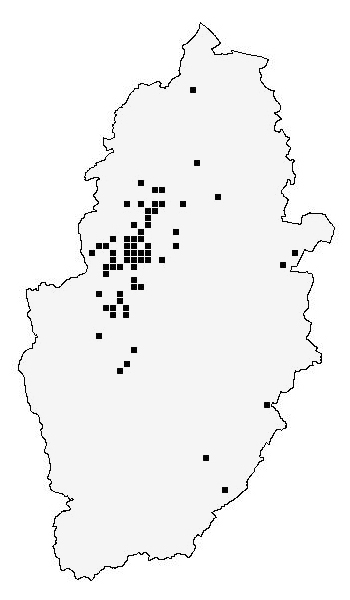 |
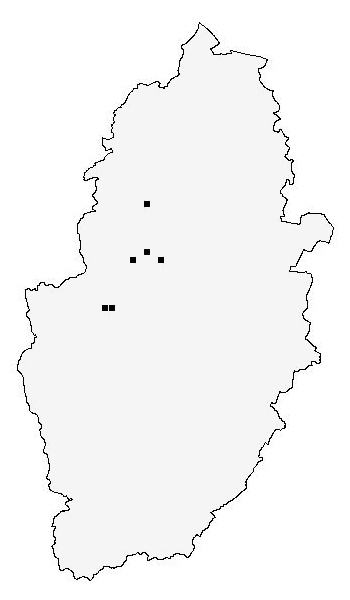 |
||||
| Formica rufa (Linnaeus, 1761) | Lasius alienus (Foerster, 1850) | ||||
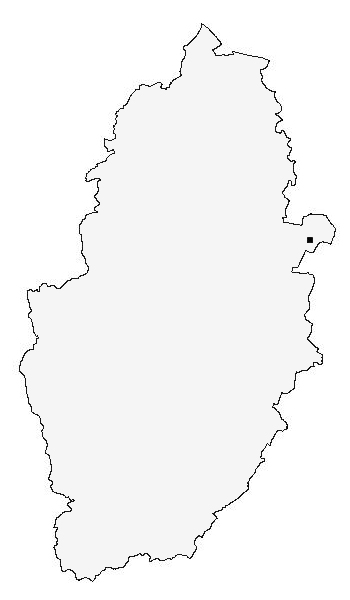 |
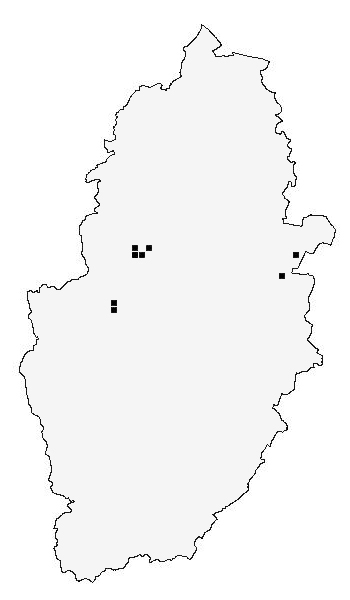 |
||||
| Lasius brunneus (Latreille, 1798) | Lasius flavus (Fabricius, 1782) | ||||
 |
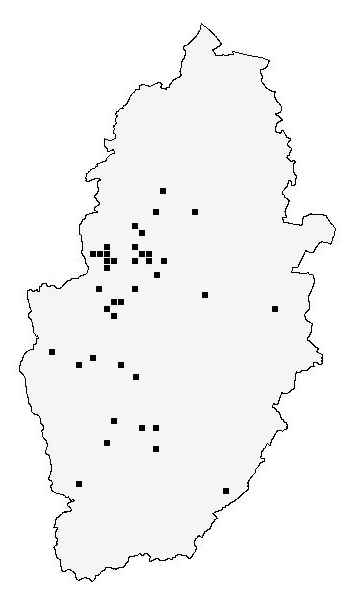 |
||||
| Lasius fuliginosus (Latreille, 1798) | Lasius mixtus (Nylander, 1876) | ||||
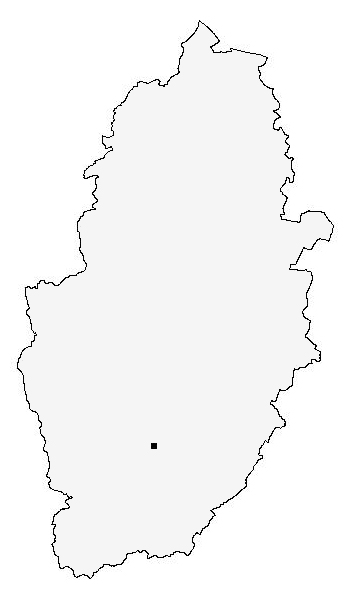 |
 |
||||
| Lasius niger (Linnaeus, 1758) | Lasius platythorax (Seifert, 1991) | ||||
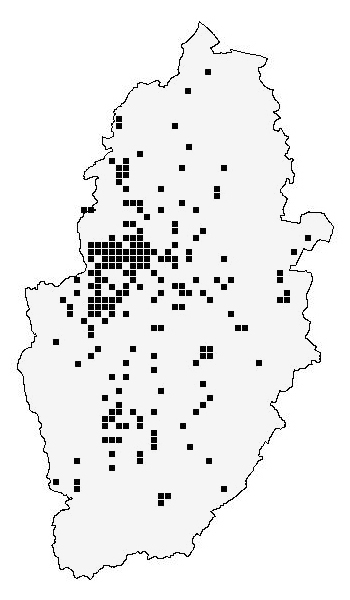 |
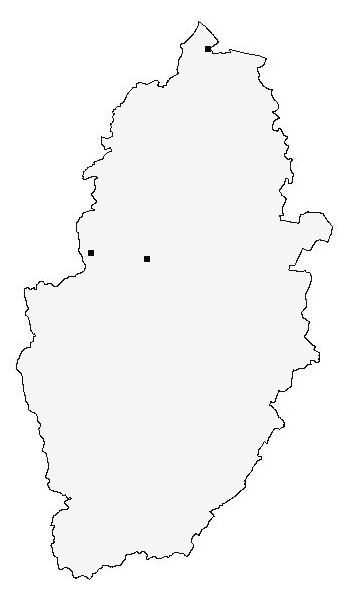 |
||||
| Lasius umbratus (Nylander, 1846) | Leptothorax acervorum (Fabricius, 1793) | ||||
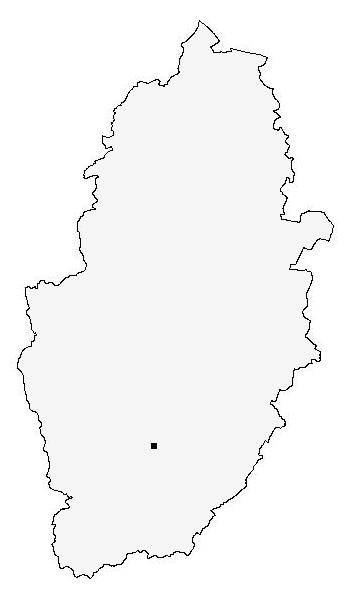 |
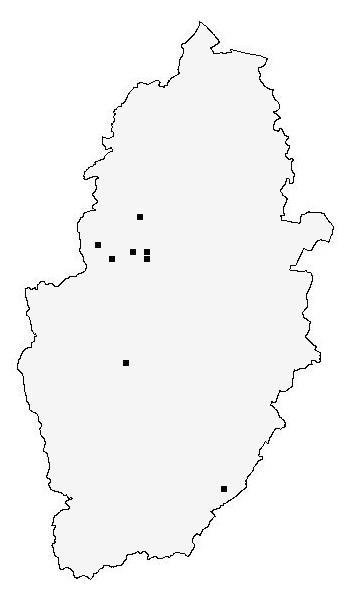 |
||||
| Myrmicinae (subfamily) | |||||
| Myrmica lobicornis (Nylander, 1846) | Myrmica rubra (Linnaeus, 1758) | ||||
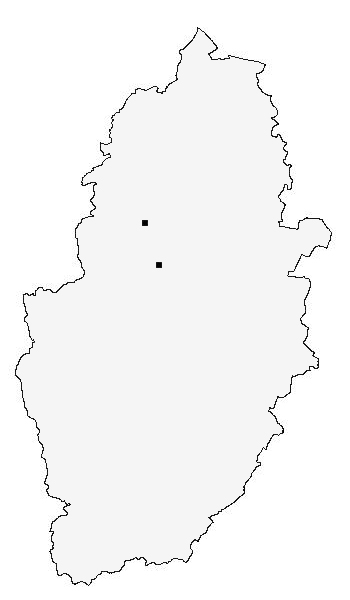 |
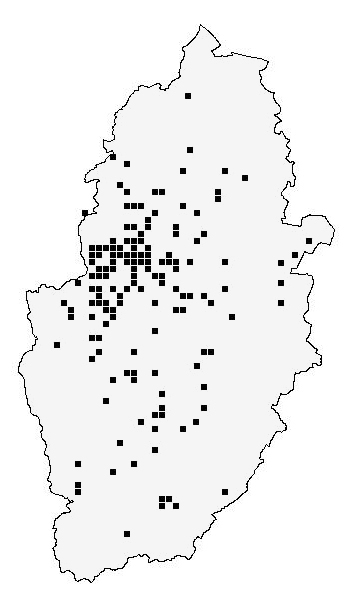 |
||||
| Myrmica ruginodis (Nylander, 1846) | Myrmica sabuleti (Meinert, 1861) | ||||
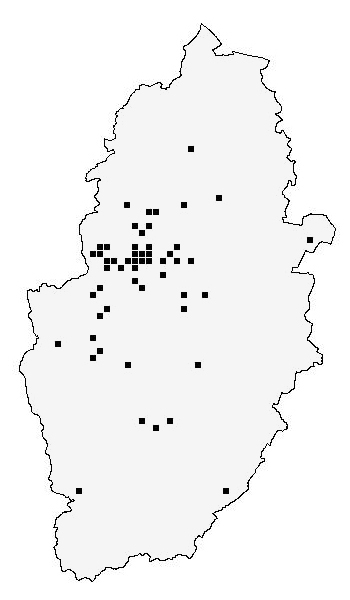 |
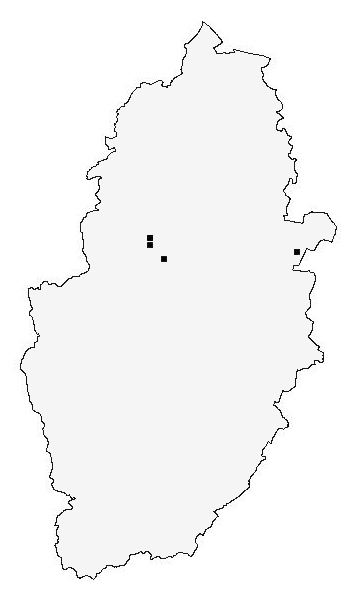 |
||||
| Myrmica scabrinodis (Nylander, 1846) | Myrmica sulcinodis (Nylander, 1846) | ||||
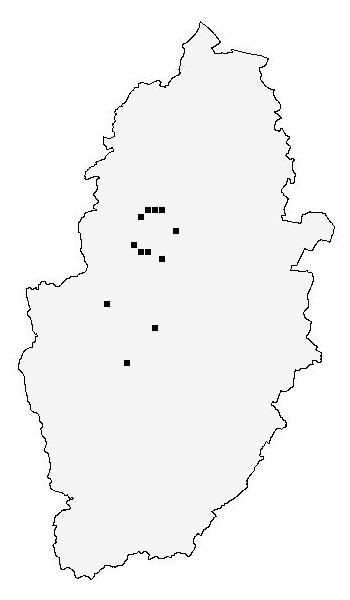 |
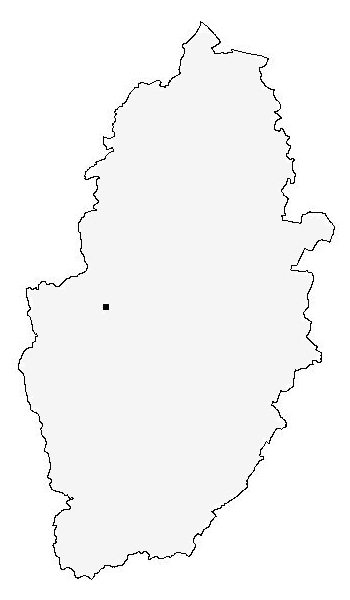 |
||||
| Stenamma debile (Förster, 1850) | |||||
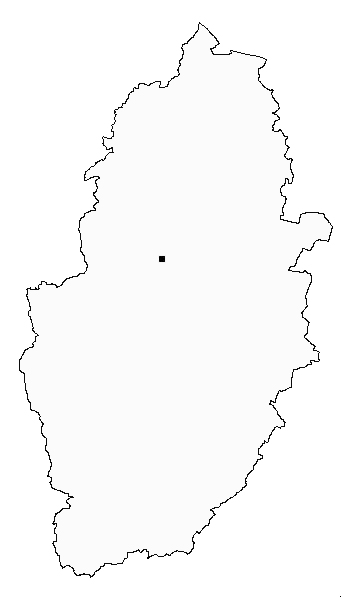 |
|||||
| Ponerinae (subfamily) | |||||
| Hypoponera punctatissima (Rogers, 1859) | |||||
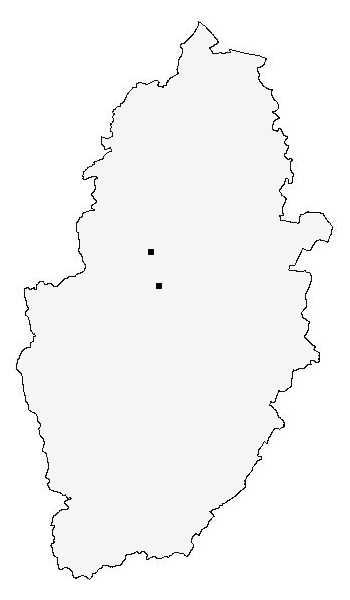 |
|||||